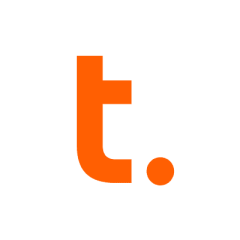What is our primary use case?
We'd done a lot of replacements of sites. We've installed new systems with Unity support. We installed and deployed around about five systems for a bank in South Africa. When the old Teradata equipment became obsolete, we replaced them with new ones.
I was involved with the whole thing from start to end. You can't just upgrade Teradata. You have to see if all of the other stuff is compatible with the new site.
What is most valuable?
The most valuable feature of Teradata was actually the fact that it controls everything on a database. It's very, very fast. The way that it operates, the way it was designed, is quick. Not one other system, even IBM, is working on the principle of how Teradata is working. Teradata system is like a multiprocessor. In an IBM system, if you send him a query, the one CPU will handle it, and it will do the query and it'll send it out again. With Teradata, if the one query is coming in, you've got 12 CPUs and 20 hard drives; that query will be handled, at the same time, by the 12 CPUs and the 20 hard drives to store and subtract the information. It's just a totally different way how Teradata is working, and due to that, the performance of Teradata is extraordinary. There is no other system in the world that compares to it.
What needs improvement?
The setup is not straightforward.
I would like Teradata to get involved in South Africa. They aren't doing aggressive promotion of Teradata systems in South Africa. They really should.
For how long have I used the solution?
I was dealing with the solution for 12 years.
I was doing professional services for them. They call it PS, and I've done customer services support for them, for the hardware and software support CS for 12 years, and as we grow, that time when I started, we were quite small and as the time we're growing, we are getting more persons on board.
What do I think about the stability of the solution?
The stability is excellent except for Unity. That time when Unity was installed, if it was running on passive routing, it was fine; however, if you're running on active, there was still some problem with the software. We've tried to put it on active routing every time we experience major problems with the software. When that happens, we must go back to passive routing again. When I spoke to someone the other day, they said there's a new app now. They're going to shut down Unity. There's some other application they're going to install now. They're not going to continue with Unity anymore, and that's not being sold to clients anywhere worldwide. However, there was definitely a bug in the software. As we were installing Unity, there were always coming new releases out, and we had to upgrade, and even with the upgrades, it still gave us problems. It became better, yet it wasn't ever 100% successful.
Otherwise, with the other systems, for all our other clients, the 12 years I worked for them, I had maybe eight or nine P1 calls, meaning that the system was down. The system is very stable, except when we started to fill Unity for the bank. Then we had a lot of P1 calls caused by Unity.
What do I think about the scalability of the solution?
For the Unity side, we've had issues. Otherwise, with the other systems, for all our other clients, the 12 years I worked for them, I had maybe eight or nine P1 calls, meaning that the system was down. The system is very, very stable, except when we started to fill Unity for the bank. Then we had a lot of P1 calls caused by Unity.
We had 120 people in our organization working with the solution. However, our clients, depending on which account, could have thousands of users.
How are customer service and support?
We get excellent, excellent support from Teradata. I had a good relationship with Teradata. I know all the guys quite well. We get excellent support. I can always phone them as well. Even if you log the call as the process from Teradata, if they tell you they will respond in so many hours on a P1, P2, or P3, it always happens when they say it will. It's not that I had to escalate something. However, they've been great overall.
How would you rate customer service and support?
How was the initial setup?
It's not straightforward. You must know what you're doing. If you don't feed the data in correctly, it's read like bad data, bad performance. We've seen a couple of times where we've done an investigation to understand why some of the queries are slow, and then we found out that the programmers made a mistake in the way that they've created the data or the query and that was causing the problems on Teradata.
We've seen this a couple of times. You can't be an IBM person and think you can become a programmer for Teradata. It's two different systems, and we've seen it several times. You have to know what you're doing when you do it, especially on the analytics side of Teradata.
To deploy Teradata, it takes a lot of pre-planning. It can take anywhere from two to four months. It all depends. There's a lot of stuff, actually, for the pre-planning phase, and that's one of the most important things. You have to do a lot of homework before you actually replace the system or you migrate the system. There's lots of planning that you have to put in place before you do that. YOu need a minimum of two to four months.
For the customer CS support for the hardware and software support, we had around about six engineers that were supporting all six systems and we had three people off-site.
What about the implementation team?
Here in South Africa, we didn't use consultants. Sometimes, if we don't come right, we will log a call with Teradata and ask them to help us. That said, all of the upgrades and everything we've done it on our own without any problems. We had some performance problems on the systems at the bank and then we got Teradata to assist, which they helped resolve.
What's my experience with pricing, setup cost, and licensing?
They've got various licenses. We would ensure that clients have all the licenses and everything for all the systems rolled out. That was part of the deal when we sold our system to Teradata. In the new system, subscriptions ensured everything was covered, or most everything was covered. The only thing we brought into the subscription side was the hardware and software support were separate. In the old days, you had to take the node support, hardware and software local, and the subscription and the bar support. With the latest models we sold, you just had the local support which you brought in and the subscription.
What other advice do I have?
I was the national service support manager for Teradata South Africa. I was in charge of all the sites in South Africa, Gauteng, and Cape Town. I was in charge of all the support services for Teradata.
I'd recommend the solution to other organizations.
I'd rate the solution nine out of ten. It's one of the best systems in the world.
Disclosure: My company does not have a business relationship with this vendor other than being a customer.



















